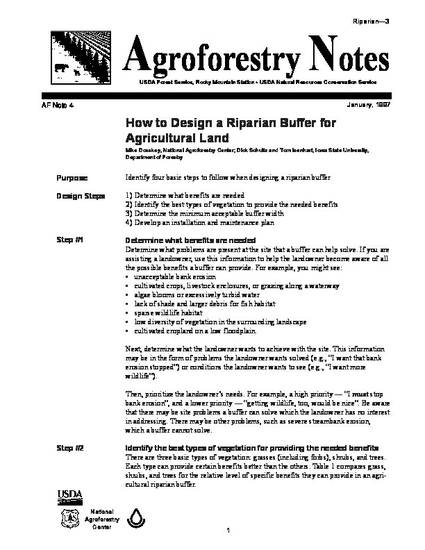
Article
How to Design a Riparian Buffer for Agricultural Land
Agroforestry Notes
Document Type
Report
Disciplines
Publication Version
Published Version
Publication Date
1-1-1997
Abstract
The purpose of this note is to identify four basic steps to follow when designing a riparian buffer. The design steps should determine what benefits are needed, identify the best types of vegetation to provide the needed benefits, determine the minimum acceptable buffer width, and develop an installation and maintenance plan.
Rights
Works produced by employees of the U.S. Government as part of their official duties are not copyrighted within the U.S. The content of this document is not copyrighted.
Language
en
File Format
application/pdf
Citation Information
Michael G. Dosskey, Richard C. Schultz and Thomas M. Isenhart. "How to Design a Riparian Buffer for Agricultural Land" Agroforestry Notes Iss. 4 (1997) p. 1 - 4 Available at: http://works.bepress.com/thomas_isenhart/33/

This report is from Agroforestry Notes AF4 (1997): 4 pp.